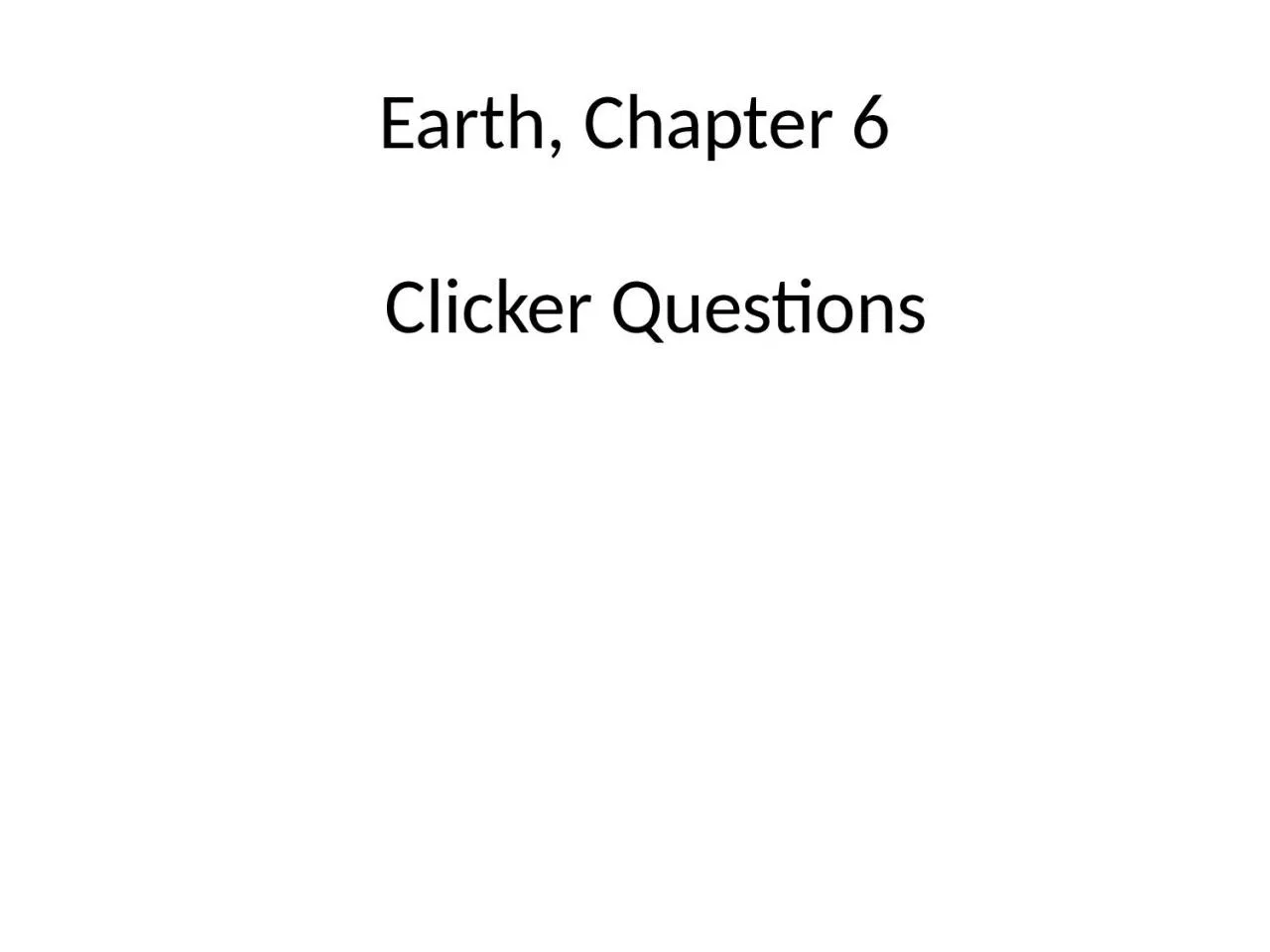

62 The melting associated with the addition of carbon dioxide CO 2 or water H 2 O to rocks is referred to as pressure melting decompression melting addition of volatiles subduction ID: 928497
Download Presentation The PPT/PDF document "Earth, Chapter 6 Clicker Questions" is the property of its rightful owner. Permission is granted to download and print the materials on this web site for personal, non-commercial use only, and to display it on your personal computer provided you do not modify the materials and that you retain all copyright notices contained in the materials. By downloading content from our website, you accept the terms of this agreement.
Slide1
Earth, Chapter 6
Clicker Questions
Slide26.2 The
melting associated with the addition of carbon dioxide (CO
2) or water (H2O) to rocks is referred to as
pressure melting.
decompression melting.
addition
of
volatiles.
subduction
of
volatiles.
pressure addition.
Slide36.2 The
melting associated with the addition of carbon dioxide (CO
2) or water (H2O) to rocks is referred to as:
pressure melting.
decompression melting.
addition of volatiles.
subduction of volatiles.
pressure addition.
Slide46.3 A
magma high in silica (SiO
2) is called
mafic.
magma.
granite.
basalt.
felsic.
Slide56.3 A
magma high in silica (SiO
2) is called:
mafic.
magma.
granite.
basalt.
felsic
.
Slide66.4 Hot
mafic magma can be described best
as
low
viscosity and low
fluidity.
low
viscosity and high
fluidity.
high
viscosity and high
fluidity.
high
viscosity and low
fluidity.
medium
viscosity and medium
fluidity.
Slide76.4 Hot
mafic magma can be described best
as
low viscosity and low fluidity.
low viscosity and high fluidity.
high viscosity and high fluidity.
high viscosity and low fluidity.
medium viscosity and medium fluidity.
Slide86.5 A
pyroclastic flow
is
a
slow volcanic
flow.
a subsurface
volcanic
flow.
a high-altitude
volcanic
event.
a rapid-moving
,
ground-hugging
volcanic
flow.
a
volcanic explosion under and ice
sheet.
Slide96.5 A
pyroclastic flow
is
a slow volcanic flow.
a subsurface volcanic flow.
a high-altitude volcanic event.
a rapid-moving, ground-hugging volcanic flow.
a volcanic explosion under and ice sheet.
Slide106.7 Most melt at a subduction zone is generated by
heat transfer melting of the subducting plate.
decompression melting of the subducting plate.
addition of volatiles into the asthenosphere.
decompression melting of the asthenosphere.
There is no volcanic activity at a subduction zone.
Slide116.7 Most melt at a subduction zone is generated by
heat transfer melting of the subducting plate.
decompression melting of the subducting plate.
addition of volatiles into the asthenosphere.
decompression melting of the asthenosphere.
There is no volcanic activity at a subduction zone.